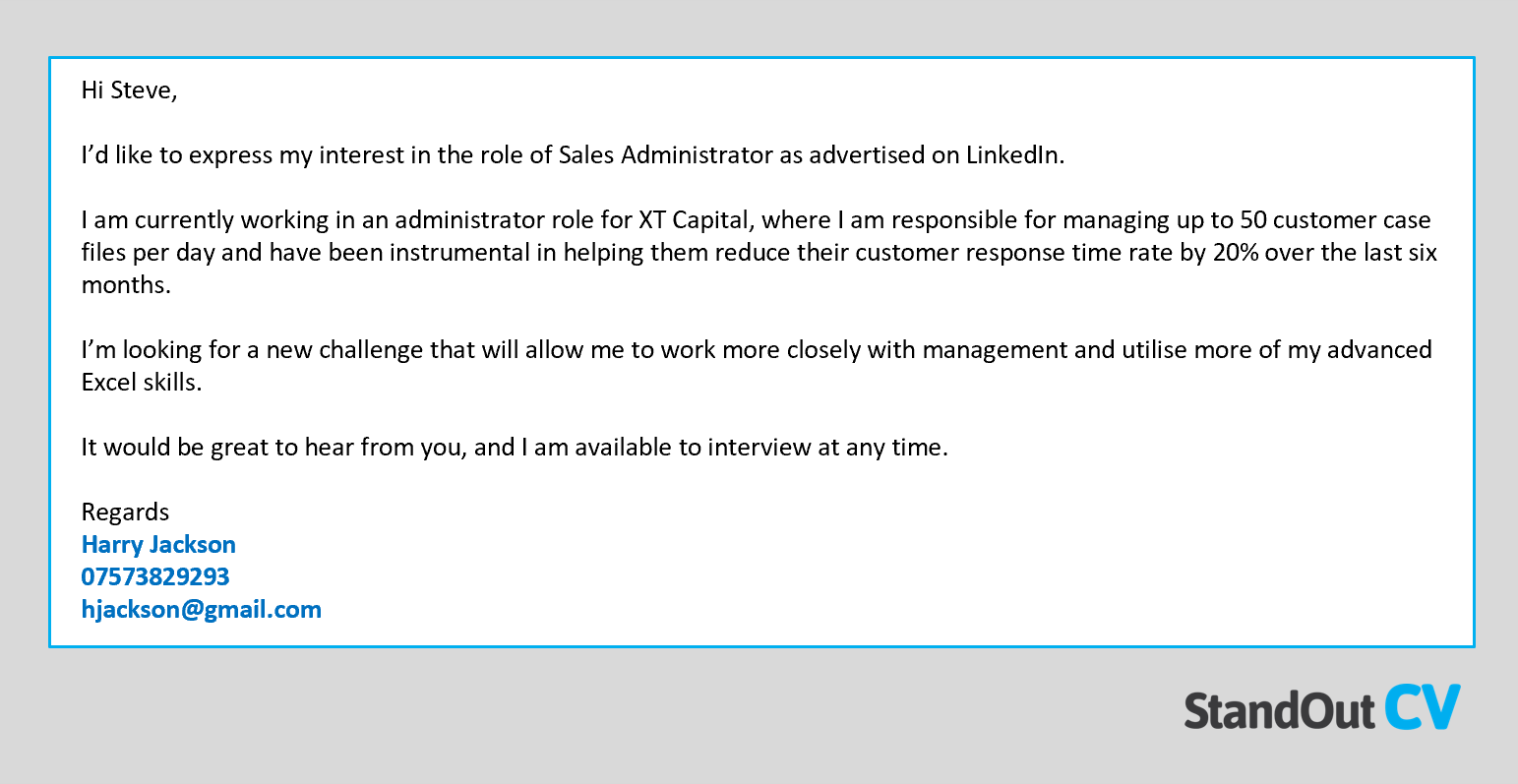
If you want to secure the job of your dreams, make sure that your CV grabs the attention of recruiters.
But how do you achieve this?
You must create a compelling cover letter to introduce and accompany your CV.
A short cover letter will quickly establish rapport with hiring managers, prompting them to open your CV.
This article, including eight short cover letter examples (with templates) plus our writing guide, will demonstrate how to write your own enticing cover letter and get noticed in the job market.

Hi [Recruiter name],
I would like to express my interest in the role of [Job title] as advertised on [Website name].
I am currently working in a [Current role] role for [Current employer] where I am responsible for [Core responsibilities of role + quantified achievement if possible]
I’m looking for a new challenge that will allow me [Aspirations + mention of suitable skill]
It would be great to hear from you and I am available to interview at any time.
[Name]
[Phone number]
[Email]
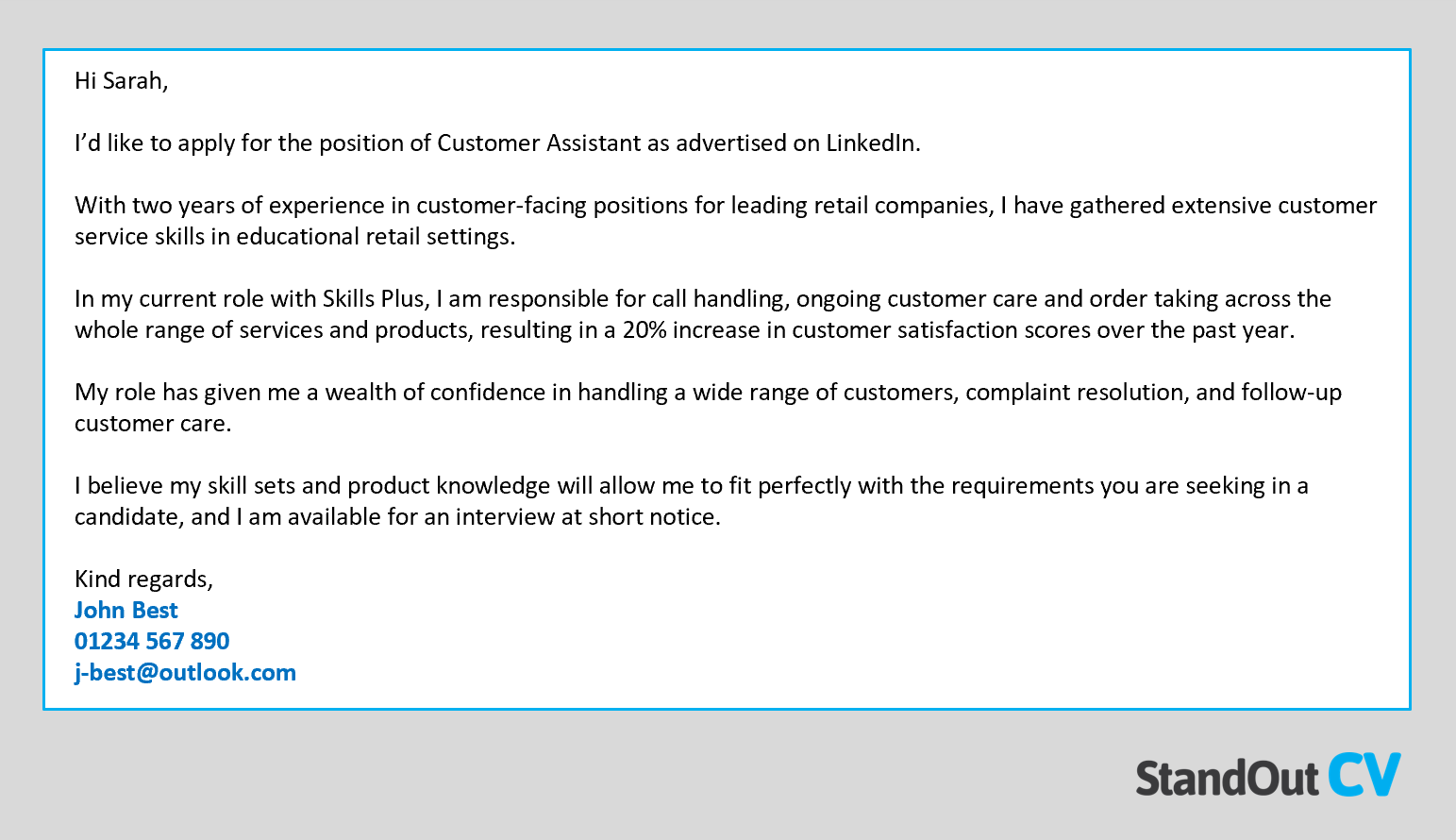
Hi [Recruiter name],
I’d like to apply for the position of [Job title] as advertised on [Website name].
With [Number of years’ experience] in [Type of position(s)] for [Name(s) of previous companies], I have gathered extensive [Core responsibilities] in [Type of setting].
In my current role with [Current employer], I am responsible for [Core responsibilities of role + quantified achievement if possible]
My role has given me [Aspirations + mention of suitable skill].
I believe my skill sets and product knowledge will allow me to fit perfectly with the requirements you are seeking in a candidate, and I am available for an interview at short notice.
[Name]
[Phone number]
[Email]
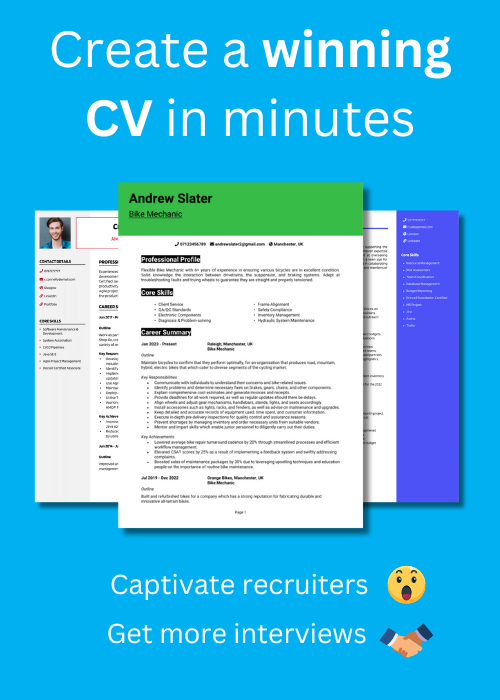

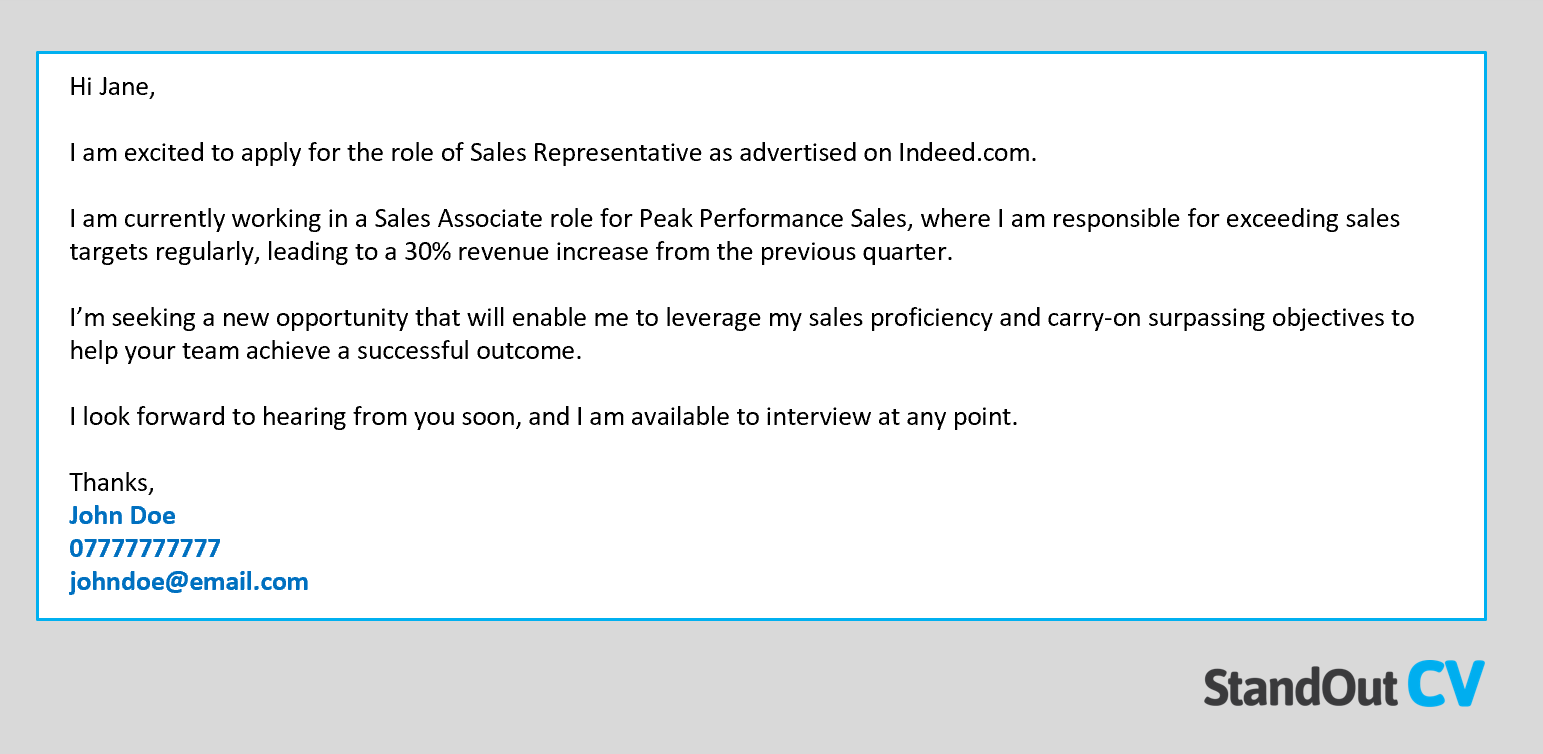
Hi [Recruiter name],
I am excited to apply for the role of [Job title] as advertised on [Website name].
I am currently working in a [Current role] role for [Current employer], where I am responsible for [Core responsibilities of role + quantified achievement if possible].
I’m seeking a new opportunity that will enable me to [Aspirations + mention of suitable skill].
I look forward to hearing from you soon, and I am available to interview at any point.
[Name]
[Phone number]
[Email]
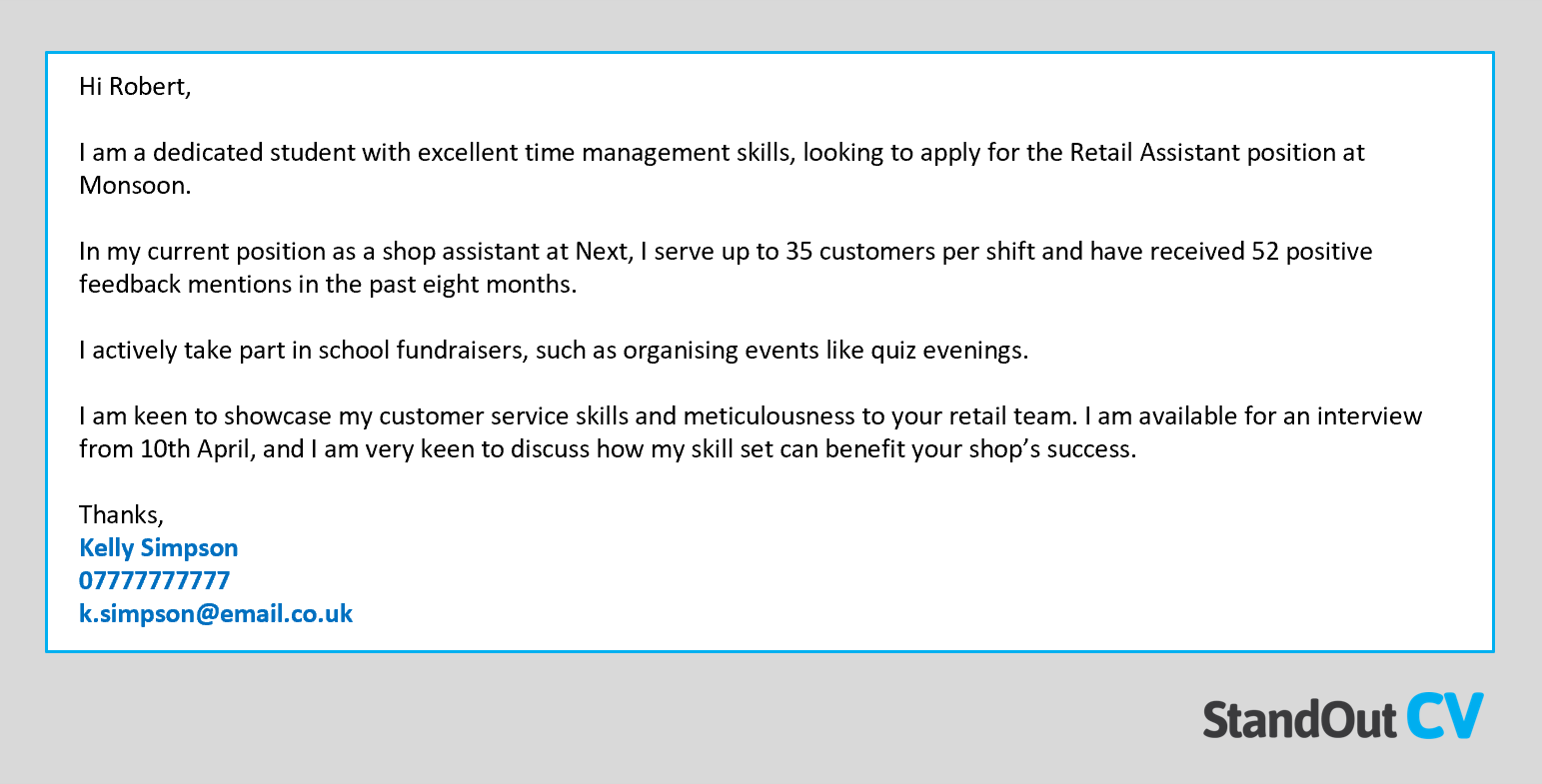
Hi [Recruiter name],
I am a dedicated student with excellent [Core skills], looking to apply for the [Job title] position at [Company name].
In my current position as a [Current role] at [Current employer], I [Core responsibilities of role + quantified achievement if possible].
I am keen to showcase my [Aspirations + mention of suitable skill].
I am available for an interview from [Insert date], and I am very keen to discuss how my skill set can benefit [Company name’s] success.
[Name]
[Phone number]
[Email]
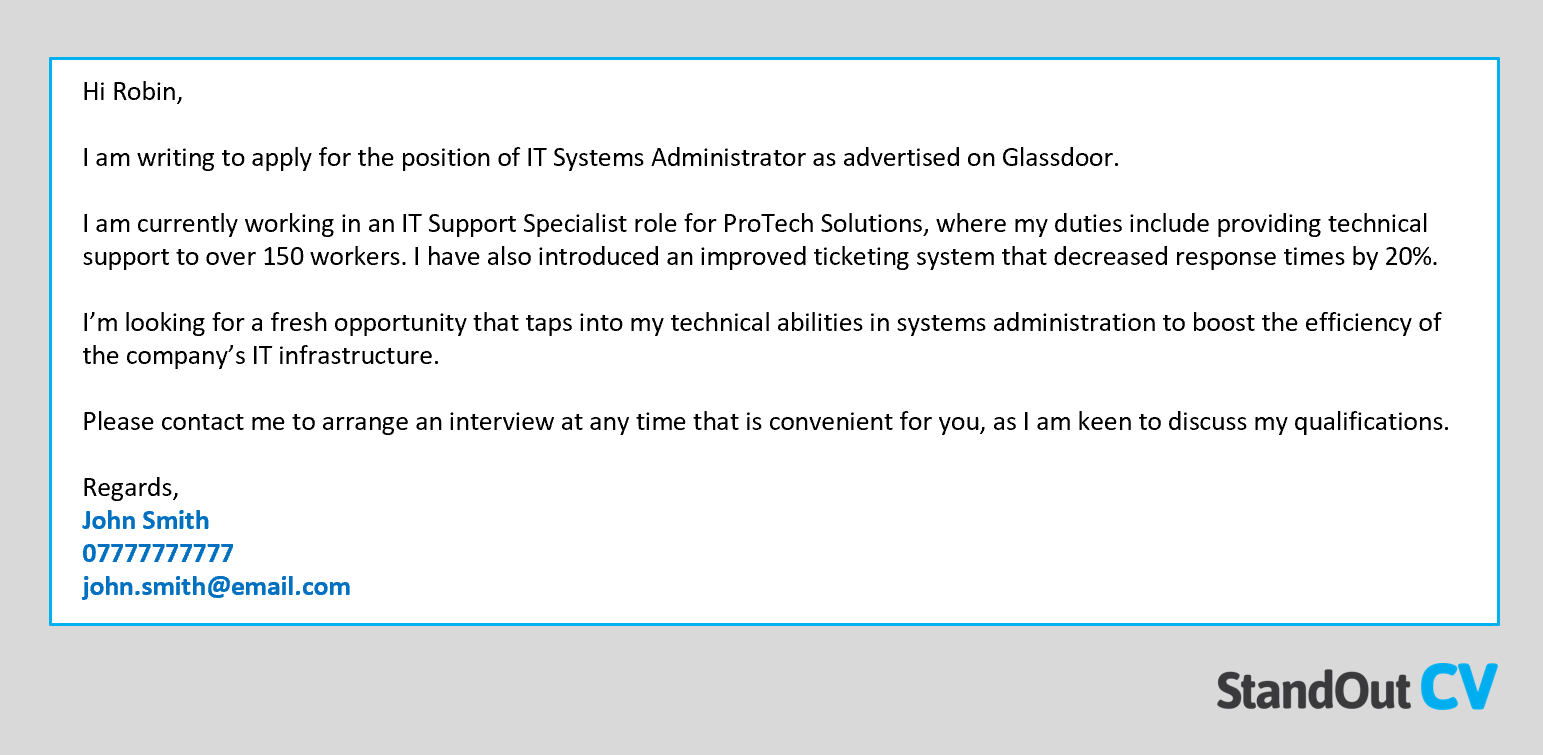
Hi [Recruiter name]
I am writing to apply for the position of [Job title] as advertised on [Website name].
I am currently working in a [Current role] role for [Current employer], where my duties include [Core responsibilities of role + quantified achievement if possible].
I’m looking for a fresh opportunity that [Aspirations + mention of suitable skill].
Please contact me to arrange an interview at any time that is convenient for you, as I am keen to discuss my qualifications.
[Name]
[Phone number]
[Email]
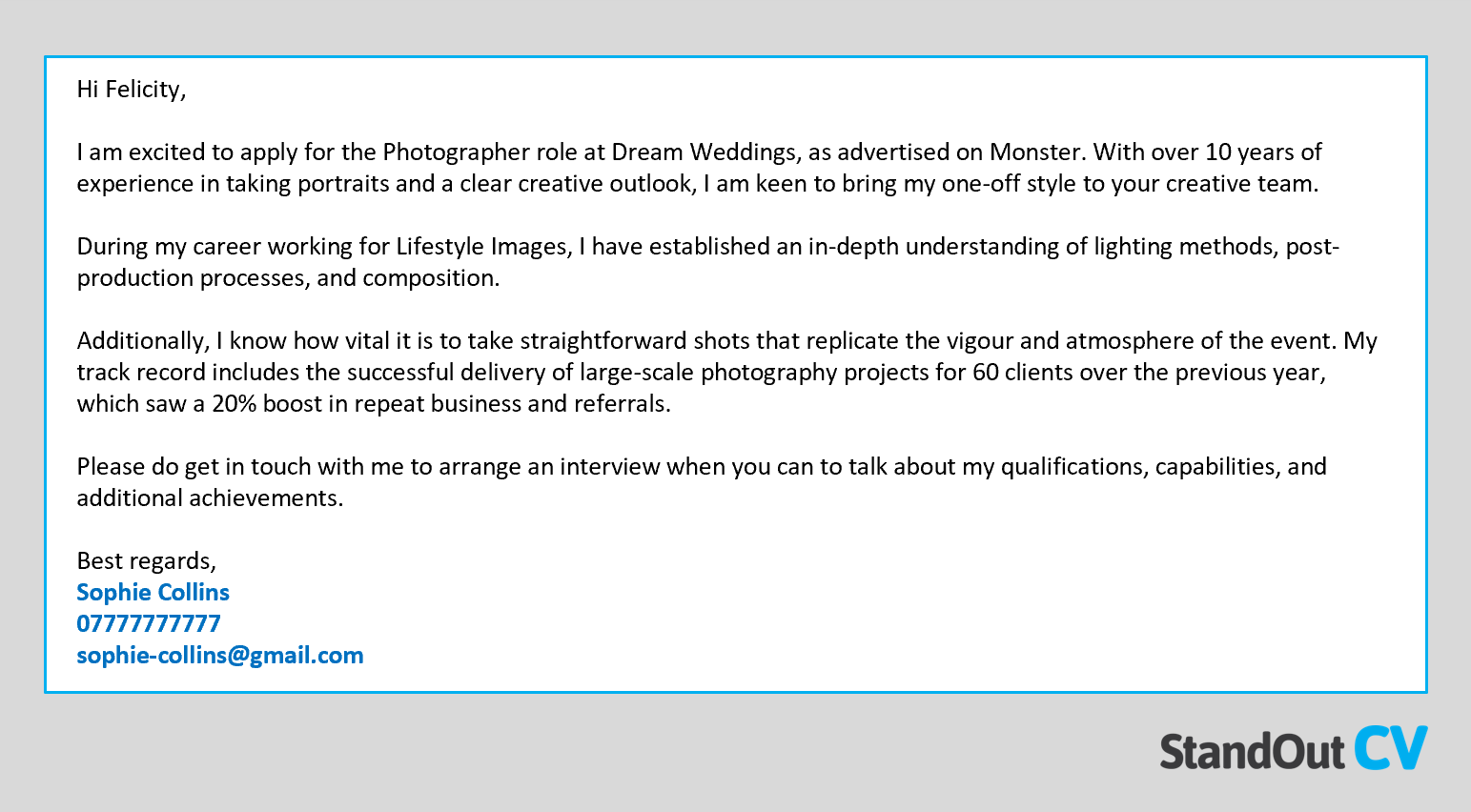
Hi [Recruiter name],
I am excited to apply for the [Job title] role at [Company name], as advertised on [Website name]. With over [Number of years] years of experience in [Core responsibilities of role], I am keen to bring my [Skills] to your [Team/company].
During my career working for [Current employer], I have established an in-depth understanding of [Core responsibilities of role + quantified achievement if possible]
Additionally, I [Aspirations + mention of suitable skill].
Please do get in touch with me to arrange an interview when you can to talk about my qualifications, capabilities, and additional achievements.
[Name]
[Phone number]
[Email]


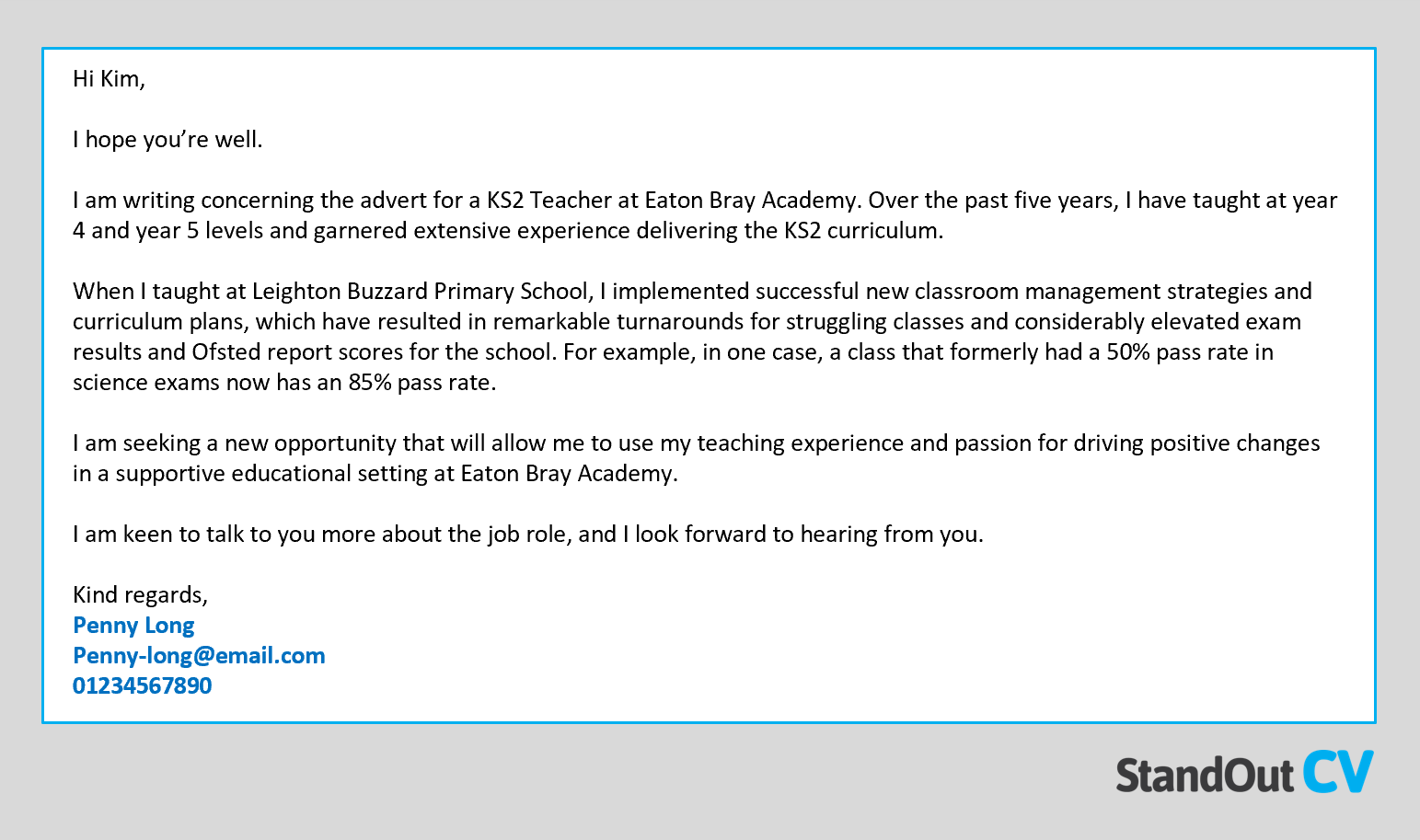
Hi [Recruiter name],
I hope you’re well.
I am writing concerning the advert for a [Job title] at [Name of educational setting]. Over the past [Insert number] years, I have [Core responsibilities of role + quantified achievement if possible].
When I taught/worked at [Name of educational setting], I implemented [Core responsibilities of role + quantified achievement if possible].
I am seeking a new opportunity that will allow me [Aspirations + mention of suitable skill].
I am keen to talk to you more about the job role, and I look forward to hearing from you.
[Name]
[Phone number]
[Email]
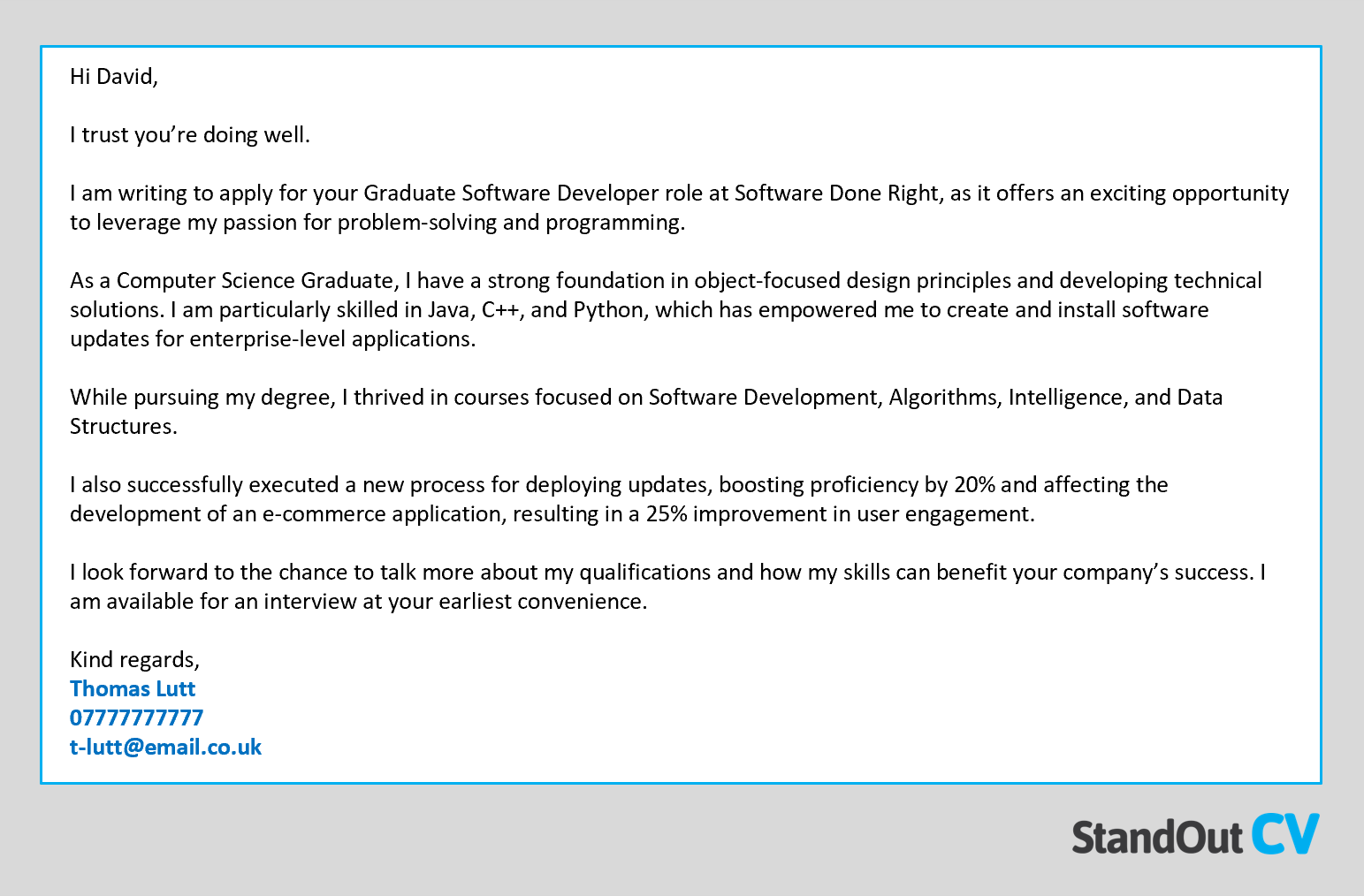
Hi [Recruiter name],
I trust you’re doing well.
I am writing to apply for your [Job title] role at [Company name], as it offers an exciting opportunity to leverage my passion for [Core responsibilities].
As a [Current role], I have a strong foundation in [Core responsibilities of role + quantified achievement if possible].
While pursuing my degree, I thrived in courses focused on [List of course modules].
I also successfully [Core responsibilities of role + quantified achievement if possible].
I look forward to the chance to talk more about my qualifications and how my skills can benefit your company’s success. I am available for an interview at your earliest convenience.
[Name]
[Phone number]
[Email]
Your cover letter is a preliminary message that introduces your CV when you apply for a job.
It must convince the hiring manager to open your CV and potentially invite you to an interview – but they get hundreds of applications every day, so they don’t have much time to read each one.
So writing a short cover letter can help you get your point across quickly and ensure that more recruiters read your CV.
Now that you have seen some good examples of cover letters to accompany your CV, let’s look in more detail at how you’ll go about writing your own, and what content you should include.
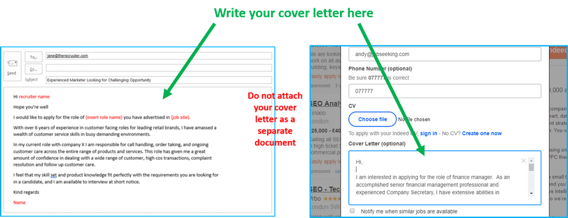
You should always write your cover letter in the body of the email. Alternatively, if you are sending your application via a job board, you can use the messaging system. But don’t attach your cover letter as a document.
Your cover letter should immediately captivate the recruiter from the very second they access your job application.
If they have to go through the effort of opening a document to read it, this slows everything down and they probably won’t bother to open it.


To begin your cover letter, grab the recruiter’s attention with a warm greeting – and use their name if you can find it.
Here are some quick ways to find a recruiter’s name.
There’s no need to stress if you can’t work out the hiring manager’s name – you’re not alone.
Just begin your cover letter with a friendly “Hi” – this is perfectly fine in this circumstance.
Your greeting should strike a balance between being friendly and professional – but not excessively relaxed, yet not too formal.
Consider addressing the recruiter using:
Steer clear of traditional greetings, like “Dear sir/madam” unless you’re applying to extremely formal companies.
When you’re writing a cover letter, you must find a middle ground between professionalism and demonstrating your personality and communication skills.
If you’re too casual, you come across as unprofessional. On the flip side, being excessively formal makes you look like you lack social skills.
Aim for that sweet spot when you sound both friendly and professional.
Start with something like, “I hope you’re well” – this adds a personal touch to your cover letter. What’s more, make sure that your spelling and grammar are impeccable, as mistakes can raise concerns for recruiters.
Your cover letter aims to encourage recruiters to open your CV. You can do this easily by quickly telling recruiters about your relevant skills tailored to the positions you’re applying for.
Scan over the job descriptions you’re applying to and note down the most significant skills and qualifications the hiring manager is requesting.
Next, when creating your cover letter, make your relevant skills the key focus.
Tell them why you’re the best-qualified applicant and how your skill set is directly relevant to the job.
Doing so provides recruiters with all the reassurance they need to look at your CV and consider you for the position.
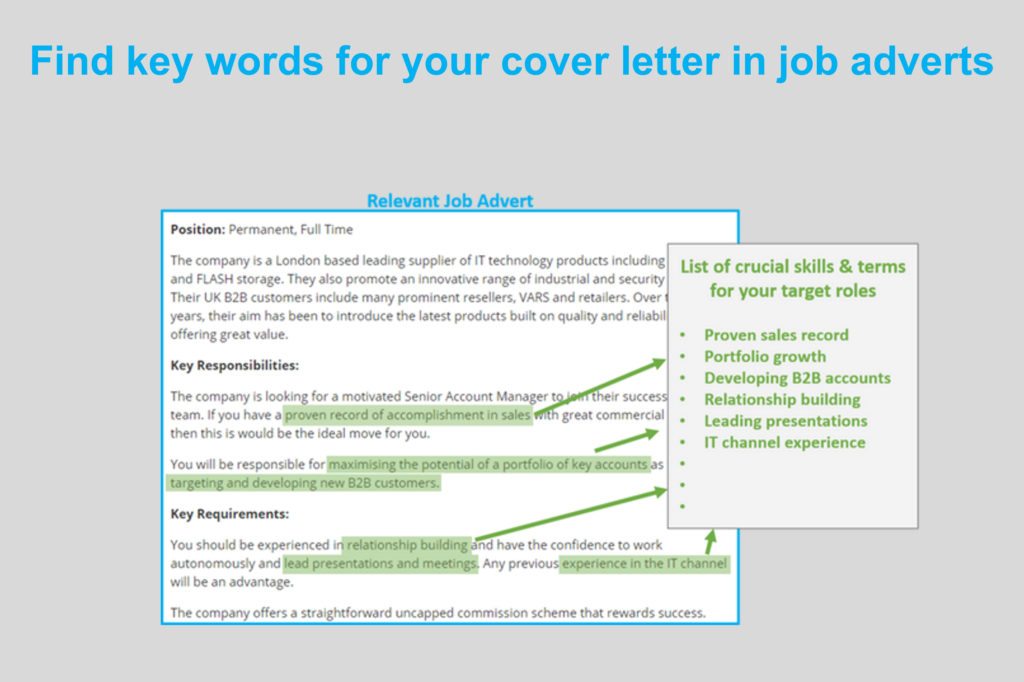
To give your cover letter that extra edge, add quantified achievements. These are specific accomplishments, with added numbers, that show your value to would-be employers.
For example, if you are a sales representative, you could say you have boosted sales by 20% in your past role and completed 50 customer calls daily with a 96% satisfaction rate. Or that you decreased project turnaround time by 30%.
Quantified achievements give a hiring manager proof of your impact in the workplace and can significantly increase your chances of securing a job interview.


When you’re applying for a job, remember – recruiters and hiring managers are usually incredibly busy and likely short on time.
So, be sure to get your message across to them as swiftly as possible. Ideally, in the shortest amount of time.
Keep your cover letter brief and to the point. If you create a rambling cover letter, this will only overburden recruiters, as they are going through countless emails daily.
Keep your cover letter between 3 and 6 sentences long. Don’t use wordy language – keep your sentences short and sweet.
For example, rather than saying, “I am writing to notify you that I am applying for the position of…”, you can just say, “I’d like to apply for the position of…”
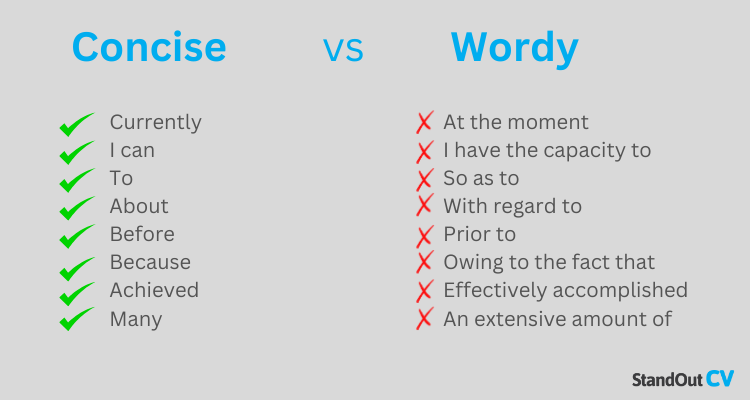
Here are a few more tips on how to keep your cover letter snappy and succinct:
To conclude your cover letter, include a professional signature at the very bottom. This gives a recruiter your essential contact details.
Not only does a professional signature provide various ways of getting in touch with you, but it also gives a very polished look and demonstrates that you understand how to communicate in the working environment.
Your professional signature should include:
Optionally, you could include the following in your professional signature:
Here are some examples of professional signatures at the bottom of a cover letter:

When you’re writing your cover letter, avoid making these everyday errors.
The goal of your cover letter is to instantly greet and connect with the recruiter who opens it. So, avoid attaching your cover letter as a separate document – this slows the process down considerably. What’s more, the recipient probably won’t even open it.
Always write your cover letter in the body of your email or within the job site messaging system so recruiters can read it immediately.
There is simply no need to write your address on a cover letter, as it wastes lots of valuable space at the top.
You should use this space to grab the hiring manager’s attention and present your keenness and qualifications for the role.
Recruiters want to know what talents and qualifications you contribute to the company. So, it’s better to start with a professional greeting and a short introduction that catches their attention.
Also, placing your address at the top of a cover letter can make it look a little outdated.
In today’s age of digital job applications and online submissions, hiring managers prioritise the content of your cover letter over conventional formatting.
Leading with your home address can take up valuable space – it just isn’t necessary unless the job posting specifically asks for it.
The better option? Put your name, phone number, and email address at the bottom of your cover letter after you have described why you’re the perfect candidate for the job.